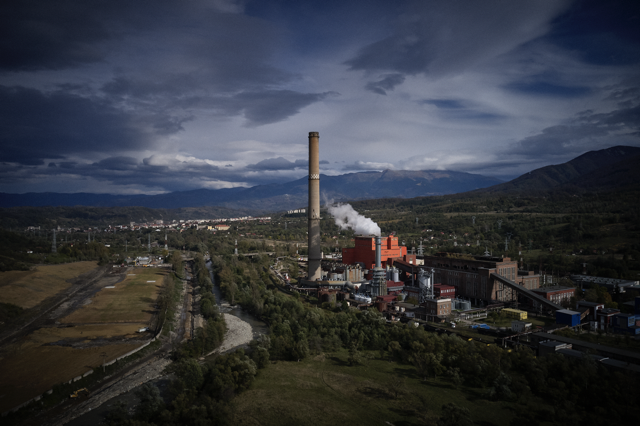
Romania risks penalties for methane-intensive hard coal production
Under new EU rules to cut methane emissions from the coal sector, Romania must apply mitigation measures but the country risks non-compliance by not fully addressing its gassy hard coal mines.
Table of Contents
Romania’s coal mine methane emissions exceed EU limits
Methane, the second most important greenhouse gas driving climate change, continues to grow at record rates and is responsible for about 47% of the observed warming from 2010-2019.
In 2021, the European Union and the United States launched the Global Methane Pledge aiming to slash methane emissions by 30% by 2030. Last year, during COP28, the EU Commission presented the first-ever EU methane regulation to limit methane emissions from the energy sector, both in Europe and globally.
The new EU Methane Regulation, approved on May 27, 2024, now requires EU countries, as well as coal exporters to the EU, to adopt stringent monitoring, reporting, and verification (MRV) of methane emissions. The regulation also mandates mitigation measures for fossil fuel operators, including both active and closed coal mines.
Romania, the EU’s fifth largest coal producer, has four active underground mines, seven surface mines, as well as at least 173 abandoned and closed coal mines.
Ember analysis finds that three of the four active underground mines exceed the methane emissions limit set by the new EU rules. However, even as hard coal production from the country’s state-owned mines lacks transparency and is not fully reported to the EU, these mines will be required to implement mitigation measures to avoid penalties.
Romania will have only a year to establish and resource the competent authorities and responsible ministries, who will be required to deliver on the new regulations. Setting appropriate penalties will be vital to incentivise reducing emissions for coal mines and ensure an impactful Methane Regulation.
Coal mine methane in Romania
Methane is produced during the formation of coal and remains trapped in the coal seam and surrounding strata. When coal is mined, this methane is released into the atmosphere, and emissions can continue for decades, even after mining activities have stopped.
In 2021, Romania reported that coal mining activities in the country emitted 213 thousand tonnes (kt) of methane, responsible for 60% of the country’s energy sector methane emissions.
CMM emissions are above the EU threshold
Methane doubles the climate impact of Romania’s hard coal
Romania should prioritise coal mine methane capture
Methane emissions from coal mining can be captured and converted to generate electricity and/or heat whilst reducing GHG emissions. However, currently only 0.2% of the methane emitted from active and closed underground mines in Romania was utilised, according to 2019 data. The rest is released into the atmosphere.
Romania’s current lack of transparency
Improving methane capture at active mines for heat and power generation
Romanian researchers have studied the available tools for improving the capture and utilisation of CMM at each underground mine. Their findings indicate that using CMM for electricity production and thermal energy are viable options.
The research emphasised that the most straightforward method to capture methane is by improving a mine’s degassing system. One approach, used in Russia, Germany, France and Poland, involved isolating older mine areas, which increased degassing efficiency to 50-60%, capturing gas with a high methane content of 60-70%.
Despite these known solutions, INSEMEX data indicates that in 2019, Romanian mines had an average degassing efficiency of only 25%, with Vulcan mine being a notable exception, reportedly capturing and utilising 81% of its methane.
Ember analysis finds that increasing the degassing efficiency to at least 50% across all mines would increase usable methane from 447 tonnes to 1,310 tonnes per year. Transforming the methane using Combined Heat and Power (CHP) could result in 9,000 MWh of electricity and heat annually, and additional CO2e savings of 24,000 tonnes per year (using 100-year GWP).
Romania lags behind in abandoned mine methane utilisation
Whilst the EU Methane Regulation will ban all emissions from closed and abandoned mines in 2031, utilisation of Abandoned Mine Methane (AMM) is already widespread in Europe as it is cost-effective. Common options for commercial methane utilisation are power and heat generation as well as sale to natural gas pipelines.
In 2020, North Rhine-Westphalia in Germany captured and used AMM in 107 combined heat and power plants, producing around 544 GWh of electricity and 108 GWh of heat. In France, six sites currently use AMM for electricity generation.
Romania has recorded 173 closed underground mines between 1935 and 2019, yet no AMM projects have ever been implemented. Plans for AMM capture and utilisation are also currently missing from any mine closure plans.
As CEVJ’s coal extraction will end in 2030 and the four mines will be closed by 2032, methane emissions from these sites will continue as AMM, adding thousands of tonnes to Romania’s reported annual emissions from abandoned mines, 194,753 t in 2021. Addressing AMM capture and utilisation in Romania’s mine closures could facilitate methane mitigation effectively.
Acknowledgements
Thank you
The authors would like to thank several Ember colleagues for their valuable contributions and comments, including Eva Mbengue, Sarah Shannon, Reynaldo Dizon and others. We would also like to extend our gratitude to our partners: Mihai Stoica at 2Celsius for help in uncovering data, development and dissemination of the report.
Image credit
Mihai Stoica
Downloads
Methodology
Hard coal production data
The hard coal production is officially reported as a by-product of the mine closure process under the 2032 self-imposed deadline stipulated within the Decarbonisation Law. CEVJ states coal extraction at its four mines is to cease by the end of 2030 and closure works are to be completed by 2032, in agreement with the decarbonization commitments of Romania through the National Recovery Resilience Plan.
Consequently, the Paroseni Power plant receives state aid to “neutralise” the coal by burning it and the electricity produced is officially traded on the Day Ahead Market (PZU) and on the Balancing Market.
Despite Romania’s objective to stop hard coal extraction, CEVJs 2024 Board of Directors aimed to increase hard coal extraction to 2,000 tonnes per day by June 2024 to achieve net profit by the end of the financial year.
In January 2024, CEVJ reported on their website that production had already increased from 500 to 700 tonnes. This has been confirmed by the Energy Ministry who indicated that production would increase to 1,000 tonnes per day in the weeks following January.
The following statistics were compiled for coal production, and consumption of coal in the Paroseni Power Plant. For coal production, Ember uses 2019-2022 data from administrator reports, and estimates 2023 production using the power plant production data.
Figures for 2019 – 2022 in the administrator’s report state production as follows:
2018: 532,205 tonnes own production
2019: 416,031 tonnes own production
2020: 431,993 tonnes own production
2021: 265,880 tonnes out of which 253,018 tonnes from own production
2022: 216,459 tonnes out of which 194,550 tonnes from own production
Production statistics from the Paroseni Power Plant were found as follows:
2021: Working hours: 2360 hours, Energy production: 268.910 MWh, Coal consumption: 201.139 tonnes, Gas consumption: 6.893.298 Nmc, Caloric power of coal: 3.300-4.510 Kcal/kg
2022: Working hours: 2503 hours, Energy production: 283.969 MWh, Coal consumption: 216.459 tonnes, Gas consumption: 8.149.579 Nmc, Caloric power of coal: 3.300-4.510 Kcal/kg
2023: Working hours: 1851 hours, Energy production: 159.735 MWh, Coal consumption: 128.681 tonnes, Gas consumption: 7.687.226 Nmc, Caloric power of coal: 3.300-4.510 Kcal/kg
EU Reporting
The EU statistical office reports 0 hard coal production for Romania. Ember has contacted the Romanian National Institute of Statistics for clarification, with no response.
Methane Global Warming Potential
Global Warming Potential (GWP) is a measure to express the effects of GHGs in CO2 equivalent terms. Given that CH4 absorbs much more energy when in the atmosphere, but has a shorter lifetime than CO2, the IPCC considers its impact over 20 years (GWP = 82.5) and over 100 years (GWP = 29.8).
The challenge of comparing methane and carbon dioxide
One of the shortcomings of this metric is that it assumes a constant value of methane’s effects over time, when in reality it varies significantly.
Historically, the 100-year value has been used by Governments and in major international agreements on the basis that global warming is a long term challenge.
At Ember, we propose to use the 20-year GWP. Climate change is an emergency, and the next 20 years are critical with regards to climate action. Methane’s short atmospheric lifetime means emissions reductions can reduce global heating in the near term.
Within the report, we are sometimes required to use the 100-year GWP in order to draw comparisons to official reporting on CO2e savings.
“Not an either/or” Carbon dioxide and methane do not need to be compared using GWP as only concerted action against both greenhouse gases will address the current climate crisis.
Related Content





